It is for the human workers who have to dodge highly contaminated debris (like the 900 milli-sievert/hr one that TEPCO found on April 20 but was not reported by Nuclear and Industrial Safety Agency until April 23) strewn all over the plant, and it is posted at J-Village (in Hirono-machi, Fukushima Prefecture), a staging area for the operation for the Fukushima I Nuke Plant. It is regularly updated, and is submitted to the government authorities including NISA.
According to the Kyodo News article linked below, there are other highly radioactive places on the plant compound that measure 300 milli-sievert/hr, 100 milli-sievert/hr.
Remember the Packbots from iRobots that went inside the Reactor buildings (1, 2, and 3)? The Packbots didn't go in from the south door of the Reactor 1 building because the radiation at the south door had measured 270 milli-sievert/hr the previous day. So the bots cannot enter if the radiation is that high, but the workers are obliged to dodge the debris with even higher radiation and continue to work. One unlucky worker got to remove the 900 milli-sievert/hr concrete piece.
Unconvincingly, however, the Kyodo article claims the high radiation level on the compound will not derail the schedule of the roadmap that TEPCO has announced.
I've read on several Internet message boards in Japan about how the workers have been doing their best to avoid the debris and water puddles on the compound because of the very high radiation, and how the dosimeter starts beeping right away just by standing in front of the Reactor buildings. I guess they weren't the "baseless rumors" after all, and it seems the workers are more expendable than the bots.
I'm waiting for another wonderful leak by the independent, freelance journalists in Japan, who will post this map online soon. Or TEPCO can wisen up quickly and post the map on their site.
From Kyodo News Japanese (updated at 5:20AM JST 4/24/2011; the article appeared on 4/23/2011; translation is mine):
福島第1放射線汚染マップ判明 大量被ばくの恐れ続く
Radiation Contamination Map exists for Fukushima I Nuke Plant; Fear of Serious Radiation Exposure Continues
福島第1原発事故で、東京電力が建屋周辺約150カ所の放射線量を計測した結果として作業員に情報提供している「汚染マップ(サーベイマップ)」の詳細が23日、判明した。第1原発敷地内の詳しい線量が分かったのは初めて。
The details of the "Contamination (Survey) Map" was revealed on April 23, which TEPCO shares with the workers at Fukushima I Nuclear Power Plant. The Map shows the result of the measurement of radiation levels at 150 locations around the buildings within the plant compound. It was the first time that detailed radiation levels on the plant were known.20日夜までのデータを記載したマップによると、3号機原子炉建屋付近に毎時900ミリシーベルトという極めて 高い放射線量のがれきがあるなど、高濃度の放射性物質を含む水の移送配管や敷地内に残るがれきからは依然として、各所で100ミリシーベルト前後の線量が 観測されていることがうかがえる。東電が事故の収束に向けて明らかにした工程表への影響はないとみられる。
According to the map that shows the data as of April 20 evening, there was a debris near the Reactor 3's reactor building with the extremely high radiation reading of 900 milli-sievert/hour. The map also indicates the high radiation readings of about 100 milli-sievert/hour for the pipes that transport the highly contaminated water and debris on the ground. [However, the high radiation levels] are not likely to affect the TEPCO's road map for winding down the accident.
マップは作業員を大量被ばくの危険から守るため、東電が定期的に更新している。経済産業省原子力安全・保安院など関係機関に提出されているほか、事故対応拠点となっているJヴィレッジ(福島県広野町など)で掲示されている。
The map is regularly updated by TEPCO in order to protect the workers from the danger of large radiation exposure. It is submitted to the related government agencies including METI's Nuclear and Industrial Safety Agency (NISA), and is posted at J-Village (Hirono-machi, Fukushima Prefecture) that serves as a staging area for the operation for the plant accident.
The article lists the radiation levels of several locations (so Kyodo reporters must have the map..):
900ミリシーベルトの線量が観測されたのは3号機西側の消火系配管付近にあったコンクリート片。東電は23日、このがれきを20日に発見、翌日に撤去したと発表。その際、作業員が3・17ミリシーベルトの被ばくをした。
900 milli-sievert/hour from a piece of concrete near the pipe for the fire extinguishing system on the west side of the Reactor 3 building. TEPCO announced on April 23 that the concrete piece was found on April 20, and was removed by a worker the next day; the worker suffered 3.17 milli-sievert exposure.
3号機脇には300ミリシーベルトのがれきもあった。2号機のタービン建屋や立て坑にたまった高濃度の放射性物質を含む水の移送配管表面は75~86ミリシーベルト。この汚染水が送り込まれる集中廃棄物処理施設の配管では160ミリシーベルトにもなっていた。300 milli-sievert/hour from a debris on the side of the Reactor 3 building.
75 to 86 milli-sievert/hour on the surface of the pipe that transport the water with high concentration of radioactive materials from the Reactor 2's turbine building and the pit.
160 milli-sievert/hour on the pipe in the Central Waste Disposal Facility where the contaminated water is being transported.
線量計測が行われているのは1~4号機周辺。4号機付近は1~3号機に比べてやや低く、0・4~1・1ミリシーベルトだった。また敷地東側の海に近い取水設備付近でも15ミリシーベルトに達していた。
The radiation measurements are done near the Reactors 1 through 4. The radiation level around the Reactor 4 was slightly lower than around the Reactors 1 through 3, at 0.4 to 1.1 milli-sievert/hr. At the water intake facility near the ocean (east of the plant), the radiation level was 15 milli-sievert/hr.
がれきは水素爆発で吹き飛んだ原子炉建屋の壁や設備など。計測は1週間に5日程度実施され、朝から夜にかけて3~5回、それぞれ10分ほどで数カ所の地表と空間線量を測っている。
The debris are the walls and the reactor facilities/equipments that were blown off by the hydrogen explosions. The radiation measurements are done 5 days a week, 3 to 5 times a day from morning till night, 10 minutes each to measure the radiation levels on the ground and in the air at several locations.
がれきの撤去は、環境への放射性物質飛散の恐れや、深刻な被ばくの危険性がある。東電は遠隔操作の重機を使って撤去作業を進めているが、完了までに半年程度かかる見込みで、当面は高線量の場所を避けながらの復旧作業が続く。
Removal of the debris could spread the radioactive materials into the environment, and could cause serious radiation exposure for the workers. TEPCO is using the remote-controlled heavy equipment to remove the debris, but it is expected to take about 6 months to complete the removal. For the time being, the workers will have to dodge the high radiation area and continue their effort to stabilize the plant.














 Tokyo Time
Tokyo Time
![[Most Recent Quotes from www.kitco.com]](http://www.kitconet.com/charts/metals/gold/t24_au_en_usoz_2.gif)

